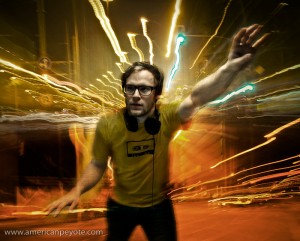 It’s been a fun year of photography so far, and running the Web Portraits Zurich project has given me reason to reflect on the process of making cool portraits of interesting people. I’ve contrasted my findings with the ramblings of professional photographers and teachers of the internet (where I learned a lot abouot photography), and have come to the conclusion that most internet sources don’t really have a handle on the portrait process, or they simply like to focus more on gear and dehumanizing people into subjects with gear talk rather than having a conversation on who is in front of our lenses.
It’s been a fun year of photography so far, and running the Web Portraits Zurich project has given me reason to reflect on the process of making cool portraits of interesting people. I’ve contrasted my findings with the ramblings of professional photographers and teachers of the internet (where I learned a lot abouot photography), and have come to the conclusion that most internet sources don’t really have a handle on the portrait process, or they simply like to focus more on gear and dehumanizing people into subjects with gear talk rather than having a conversation on who is in front of our lenses.
Now, understand, it’s not their fault. It’s not embedded in their DNA. It’s just part of the mystique of this easy-lazy-art-form called photography. Cameras and photo gear became popular because it’s easier to click a shutter on a device than painting a canvas or doing a detailed sketch of what ever it is you’re looking at. When you shoot with a big camera it makes you feel important, but there’s a reason I don’t take myself too seriously. There’s this romanic ideal of photographers being like painters and artists delving with their whole soul into the artistic expression of the portrait. Photographers are expressing the inner soul of humans for all to see in the printed or screen viewed image…however…
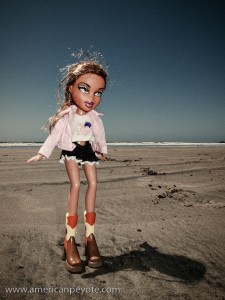 A person is not a subject
A person is not a subject
Simple, and to the point. A lot of folks get into photography because it’s cool – like I did. I drew things in math class because it was interesting, I started with photography and Photoshop because the gear makes it easy. There’s a romantic notion embedded in the collective history of photography of capturing emotions and elements of people, which would otherwise be lost forever as the second-hand ticked over and the present becomes the past and that look is lost forever (unless captured by the photographer). But a person is not a subject. Even models have names and personalities, but photographers sometimes like to ignore those humanizing notions and instead focus on the technical process of focusing light onto an image capture surface (like film or a digital sensor). Afterall, we’re all engineers and poets, painters and scientists. But I like photography because it opens a door to the non-technical side of life. Models are not Barbie dolls. I know of what I speak, for I shoot pictures of Bratz dolls when I just want to photography plastic people. However, this gets boring quickly, and is a subject best suited to those moments when you’re looking for a way to till time but don’t want to sit in front of a television.
Photographing people is distinctly different than taking snapshots of Bratz dolls because with people you now have the opportunity to interact with the person. If you’re into photographing people, then just think of the process as an extended conversation with some visual elements thrown in. When you start saying things like, “I lit my subject with this and that camera and photographed them with an 85mm f1.2 lens…” Well, you’ve lost the point of the conversation. If you listen to professional photographers they’ll tell you to talk to your subject. Get to get to know them, make them feel comfortable. But here’s the thing, small talk like, “what do you do” “what’s your favorite color” “where are you from” is just filler talk. You’re probably doing it so the person doesn’t feel ignored but not because you really want to know who they are. This type of small talk simply says, “I’m just interested in my camera and making an image and you’re just a body…so smile.” This technique can be effective given the right situation. But is that the more interesting way to shoot? Is it more interesting to shoot a Bratz doll (who can’t speak) or to listen to a person and make a picture of them as well?
A Portrait is just Conversation
A photo session is just an extended conversation in my mind, and if you start out talking with people with an authentic voice, then the photo session will just be an extension of that initial, real, emotional connection. If you starting shooting like a pornographer and only start talking when you notice your subject is looking uncomfortable, then the whole positive momentum of the conversation has already been lost and you need to sort of start over. Tripping the shutter is the shortest and least important part of a portrait photo session. But it’s the part that defines the final image. The question is, how does one get up to that point? I Think of the photo session in this way:
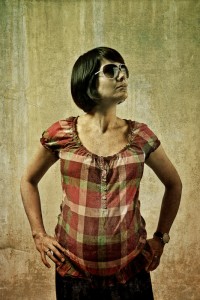 Conversation – Lighting/Set – Picture
Conversation – Lighting/Set – Picture
The more time you take in getting to know a person before you light them with a million-gazillion photons, the more natural the resulting image will be. Or more unnatural, it depends on what you’re trying to achieve, and sometimes every photo session is full of suprises. Once you understand something about the person you’re planning to shoot you can design the lighting (some call this subject driven lighting), build a set or pick a proper location, and then being planning a post-processing philosophy, all before taking any pictures. I like to spend the least amount of time possibly on actually shooting and setting up lighting. The reason is simle, the shutter trip is the most insignificant part of the process if the process was done correctly. Now, maybe you’re going for the whole Stanley Kubrik, make-the-actors-feel-uncomfortable-to-illicit-emotion-from-them deal, but that’s a whole other level of person-photographer interaction. An authentic portrait session starts (and ends) with a conversation.
Most of the technical things about photography I’ve learned from the internet. It’s been a fun time and I’ve learned a lot about light control and lenses and cameras and strange terms like gobos and brolley. But my mind became exhaused and bored with this conent, and I’ve started wondering what else is there. However, when I watch things like creativeLive with Zach Arias or attend a Strobist workshop, I’ve started to notice how technology and lights are always at the forefront, and the whole emotional connection thing is thrown in afterwards, even though people generally admit it’s one of the mose important aspects of the whole process. Those conversations are there, but they’re not focused on in blog articles like David’s article On Assignment: Caleb Jones. Technical side of the shoot is all there, but what was the emotional connection between David and Caleb?
That’s a key element that a photographer like Joey L communicates extremely well in his DVD tutorial (Sessions with Joey L). In his tutorial Joey Lawrence pushes the ideas of trust and emotional connection as being primary, and lighting and camera technology as the secondary elements of a photo shoot (or photo career). This isn’t meant to be a negative critique of Zach Arias or of David Hobby (but it could be viewd as an encouragement or suggestion). The latter two (and internet icons like Chase Jarvis) are just responding to what sells. People love the technology of photography, the lenses, bodies, radio triggers, flashes, etc. People drop big bucks on technology and then wonder why their pictures look lifeless and ordinary when they know the person has a soul and interesting story to tell (like we all do). The thing I love about the Vincent Laforet CreativeLive workshop is that he started out talking about the philosophy behind movies, the story telling and emotional elements, and then got into the gear talk. It sets your head in the right mind-set, to tell a story and to make a connection to the viewers or consumers of the media product you’re producing. That’s not to say I miss the gear talk, it just gets boring after a while.
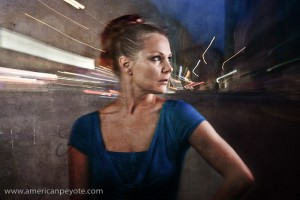 I love photo gear. I have more cameras than Onitsuka tigers and picked my last apartment based on how I could setup a photo studio. One reason I started the Web Portraits Zurich project was to do emotionally-driven portraits of people (I know that sounds a tad pretentious). I wanted to setup a process of including the emotion of the person in their portrait. I wanted to portray people including elements of how they perceive themselves. I shoot the web portraits based first around the person, and then as a secondary condition around lighting and Photoshop. For each portrait set we start out with a concept meeting, the people I’m shooting get to know me and I start to understand how they see themselves. This is the grounding for the whole photo session, and I see the whole process as one long conversation with some camera equipment and photoshop thrown in as an after-thought.
I love photo gear. I have more cameras than Onitsuka tigers and picked my last apartment based on how I could setup a photo studio. One reason I started the Web Portraits Zurich project was to do emotionally-driven portraits of people (I know that sounds a tad pretentious). I wanted to setup a process of including the emotion of the person in their portrait. I wanted to portray people including elements of how they perceive themselves. I shoot the web portraits based first around the person, and then as a secondary condition around lighting and Photoshop. For each portrait set we start out with a concept meeting, the people I’m shooting get to know me and I start to understand how they see themselves. This is the grounding for the whole photo session, and I see the whole process as one long conversation with some camera equipment and photoshop thrown in as an after-thought.
A person is not just a subject
A photo shoot is just an extended conversation
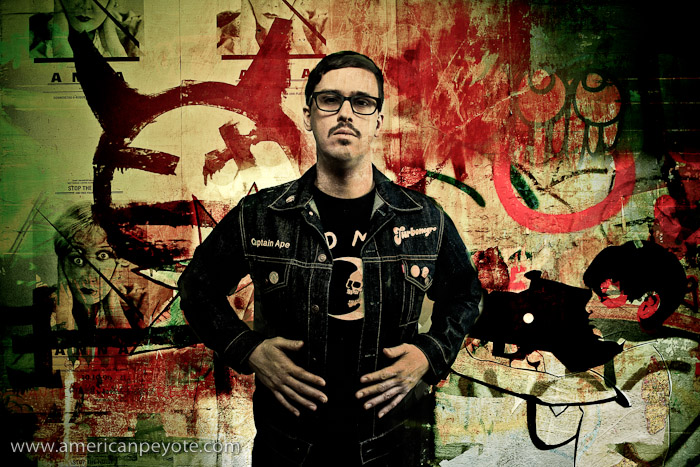
Hey Mark,
I’ll jump into this one if you’ll indulge me…
I get your point about knowing who you are photographing. But what good is all the chit-chat if the photos don’t actually show anything unique from, ehem, one “subject” to the next?
Small talk is not the end product, the photograph(s) is/are. I’m not trying to burst your bubble here, I find this a very relevant topic and interesting topic. I think it’s safe to say that all photographers bring their own personality and sense of aesthetic into the fray on a photo shoot. I.e., none of us are blank slates. But is that a bad thing? I really don’t think so.
As a “wedding photojournalist” (if you’ll pardon the expression) I find myself straddling the line between observer/story-teller and director. Connecting with a subject is of course very important, but not always possible to the extent that I would hope for. In other words, sometimes you get to know a subject, and sometimes you don’t. A talented photographer (at least the kind I aspire to) is a very attentive listener who builds this rapport quickly and capitalizes on it in a reasonable amount of time. But there’s no harm in spicing up a dull subject with some dramatic light. It often saves the day in my opinion/experience.
I don’t agree that solving lighting problems has to come last. In fact, I would bet you that there are very few professionals who wait until a subject is in the room before they start building their portrait lighting setup. That would be suicide for anyone who’s on the job.
However, you’re absolutely right if what you’re saying is: honest or “meaningful” portraits require listening to a person. That said, good photographers know that time is precious, so you’d better condense this listening in order to produce a financially viable photo shoot and/or keep your busy subject from loosing their patience with you.
It’s no wonder that gear dominates most of the photography conversation on the internet. It’s the most superficial and amateur-accessible aspect of the art. But don’t mistake photography (at least good photography) for easy-to-make “push button” art. I don’t think you actually do, but for the benefit of this conversation I’ll just say that there have only been a few individuals to walk this earth who have found capturing decisive and telling human moments in compositionally intriguing ways to be “easy.” We’re talking Henrí Cartier-Bresson league here…
My $.02
Your thoughts are always welcome here Mr. Anderson,
There’s nothing wrong with meaningful chit chat, it’s a type of conversation technique most people do every day of their lives when interacting with the people in the world around them. But one of my favorite lines in Fight Club is that about “people waiting for their turn to speak” in conversations. I think of photography as listening, and capturing the moments that seem natural or unique, when people let something go and they display something about themselves they didn’t know existed, and an image is made.
I think I’ve just gotten bored with gear discussions, like getting tired of a video game. At this stage in life, I’m interested in learning about the peolpe I shoot, which is contrary to the way many people have to work, where they have 15 minutes to photograph a person and there’s no time to do anything but setup some lights and pop off a few frames. I think you can create interesting people with or without a conversation, but it’s just so much more interesting to have that conversation if it’s possible.
The lighting design could come first, or last, or develop in between everything else. I think it just extends from the conversation and the person being photographed. Sometimes I start out with one design in mind for a shoot and then change to something else because I see that it makes more sense for the person, myself, and the image I see in my head. Today when I do a shoot I start with a concept meeting and based on what I hear from the person, I develop a shooting plan and lighting design for them.
I don’t know if I would say it was easy for Cartier-Bresson to capture the decisive moments he’s know for. He was at it a long time and no doubt shot a lot of bland snaps no one cares to see. It’s like Picasso, lots of his stuff is crap if you consider the whole collection of over 15,000 (thanks to my Wiki friend) works he created in his life.
I’ve not had much opportunity to shoot people yet, but I got these on one of my first outings:
http://www.flickr.com/photos/scottstrehlow/tags/hexane/
I can find plenty of technical issues to improve on, but I’m pleased with the photos. “Hexane” as she calls herself for modeling, is very very smart. She speaks several languages already and is learning more. She designed and made the corsets she is wearing at this shoot. During my time with her, we talked about calculus.
Many people think that great photography is just about getting gear and pointing it at someone. Similarly, many consider great portrait to be a hardware solution. Discovering and seeing the inner person and capturing that on film is one thing that differentiates great photographers from amateurs. Getting to know your client is a super way to start. Also, the photo session is not about exercising your control attributes and making clients do what you want – it is about communication. So, your piece on A Person Is Not A Subject is right on!
Thanks for this article. What you say is perfectly true, and it’s really something that’s underestimated most of the time. Coming from a technical background, I really have to remind myself all the time of creating a relationship between me and the person in front of my camera. All the technical stuff should just be used as what it really is, a set of tools to capture what I see in the person. I intentionally didn’t write ‘to capture the true nature of the person’, because my photos will always represent my view or what I see, not who the person in front of the camera really is. Because that also differentiates me as a photographer and creative person from a machine, a camera that only captures and doesn’t decide on his own way to look at something.